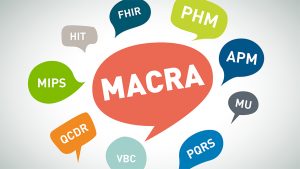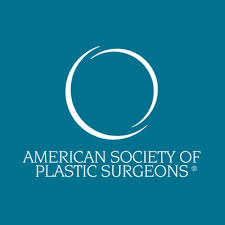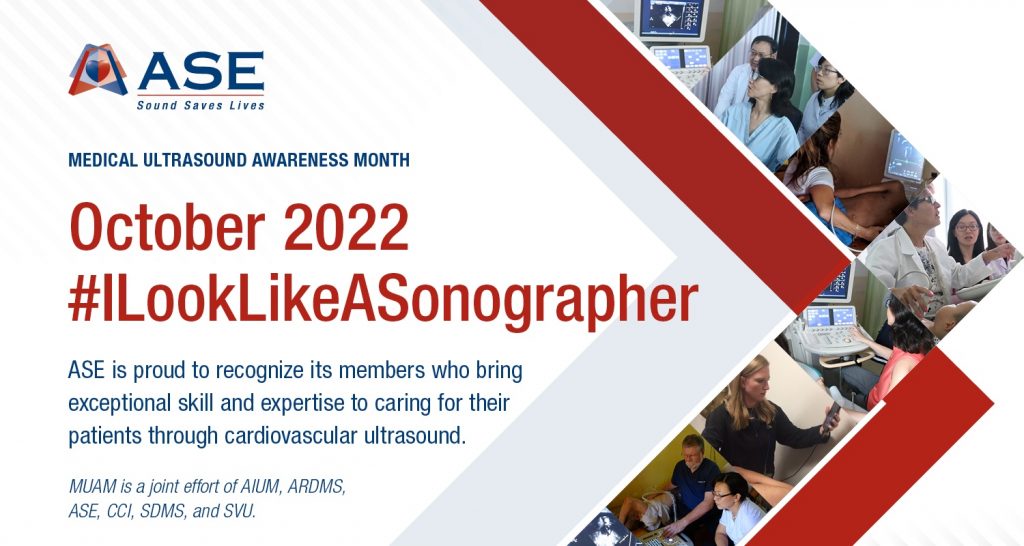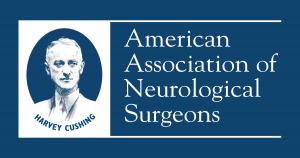On Call: The Newsletter of the Alliance of Specialty Medicine
Fall 2022


The Alliance of Specialty Medicine is working on two policy fronts to ensure access to specialty care for Medicare patients.
The Alliance recently endorsed H.R. 8800, the Supporting Medicare Providers Act of 2022. This bipartisan bill would stabilize the harmful Medicare payment cuts to physicians by averting the impending 4.42% cut to the Medicare Physician Fee Schedule conversion factor set to go into effect in January 2023. The Alliance is supportive of Congress taking immediate steps to stabilize Medicare physician reimbursements and seeks more permanent solutions to address the systemic issues with the Medicare Physician Fee Schedule (MPFS). We have written to congressional committees of jurisdiction and met with the Members and staff of House and Senate leadership as well as federal agencies like the Centers for Medicare and Medicaid Services and the Office of Management and Budget.
Heading off these cuts for 2023 and beyond is a key priority for specialty practices around the country. An unstable Medicare system will result hurt patients’ access to care. Therefore, the Alliance has pledged to work with Congress and the Administration on a predictable and stable Medicare payment system that promotes value-based care and innovation.
 In late October, the Alliance responded to a Request for Information (RFI) on actions that Congress should take to stabilize the Medicare payment system while ensuring successful value-based care incentives are in place. The RFI was issued by a bipartisan group of Congressional leaders asking for feedback on the effectiveness of the Medicare Access and CHIP Reauthorization Act (MACRA) of 2015, which repealed the sustainable growth rate (SGR) formula and expanded the role of value-based payments under Medicare, as well as recommendations on regulatory and statutory solutions to improve provider participation in value-based programs and models.
In late October, the Alliance responded to a Request for Information (RFI) on actions that Congress should take to stabilize the Medicare payment system while ensuring successful value-based care incentives are in place. The RFI was issued by a bipartisan group of Congressional leaders asking for feedback on the effectiveness of the Medicare Access and CHIP Reauthorization Act (MACRA) of 2015, which repealed the sustainable growth rate (SGR) formula and expanded the role of value-based payments under Medicare, as well as recommendations on regulatory and statutory solutions to improve provider participation in value-based programs and models.
The Alliance’s response focused on actions to improve Medicare physician payment updates, such as incorporating an inflationary index in the Medicare conversion factor to reflect rising practice costs and exempting certain costs from budget neutrality requirements. The Alliance also requested that Congress evaluate the impact of the Quality Payment Program (QPP) and Physician-Focused Payment Model Technical Advisory Committee (PTAC) on healthcare quality and value, as well as access to care — particularly as it relates to specialty care. Finally, the Alliance outlined numerous technical improvements to strengthen meaningful specialist participation in the Merit-Based Incentive Payment System (MIPS) and alternative payment models (APMs).
As many as 50 percent of cancer patients who’ve undergone a mastectomy have  elected to have breast reconstruction surgery. Yet, while breast reconstruction is a common procedure, a new national survey finds that many women may have not received adequate information to evaluate how it may impact them physically, financially and emotionally.
elected to have breast reconstruction surgery. Yet, while breast reconstruction is a common procedure, a new national survey finds that many women may have not received adequate information to evaluate how it may impact them physically, financially and emotionally.
A new survey conducted online by The Harris Poll on behalf of the American Society of Plastic Surgeons (ASPS) among over 2,000 adults in the United States measured common myths and misconceptions about breast reconstruction surgery. While women have many choices in reconstructive breast surgery – including the option not to have the procedure – more than half of (54%) of women are unsure if there are surgical options beyond breast implants. Other results that highlighted a need for greater awareness include:
“It’s important that patients receive clear information and are helped to understand all of their breast reconstruction surgery options,” said Bernard Lee, MD, MBA, MPH, President of The Plastic Surgery Foundation (The PSF). “There are still some misunderstandings around this procedure that often influence whether patients choose to even explore their treatment options. It’s important to clear up any misconceptions to provide patients the best care possible.”
Dr. Lee says it’s important that information about the surgical options is communicated concisely and effectively to patients – and that there are often preconceived notions about breast reconstruction surgery that he debunks.
“While reconstruction with breast implants is a good option for many patients seeking breast reconstruction after a mastectomy, it’s not the only option,” said Dr. Lee. “Many plastic surgeons also offer innovative microsurgical breast reconstruction procedures that use the patient’s own tissue from other areas – such as the abdomen, buttock, back or thigh – to recreate a natural-looking breast. Patients need to be educated on all their options so they can make the best choice for themselves and their lives after mastectomy.”
 Recognizing that patients deserve accurate information to make the best decisions impacting their care, ASPS and The PSF launched the Breast Reconstruction Awareness Campaign and the annual Breast Reconstruction Awareness (BRA) Day.
Recognizing that patients deserve accurate information to make the best decisions impacting their care, ASPS and The PSF launched the Breast Reconstruction Awareness Campaign and the annual Breast Reconstruction Awareness (BRA) Day.
“At a time when a breast cancer patient is faced with a difficult change in their life, we want to engage, educate, and empower patients to make a choice that’s best for them, which includes knowing their breast reconstruction options. BRA Day helps us to do that,” said Lee.
The Breast Reconstruction Awareness campaign involves informing patients, family, caregivers and media that the breast cancer loop remains open until a woman is informed of breast reconstruction options. Local BRA Day events took place throughout the nation on October 19th, and both the ongoing campaign and events seek to help raise funds to support research and grants in local communities and nationally.
Beyond the physical impact of mastectomy, there is an emotional component too, as women may experience a period of mourning due to the change in their body. Yet, the survey noted that nearly one third of women (29%) do not know there’s a period of emotional adjustment following breast reconstruction. As breast reconstruction patient Jen Rozenbaum can attest, it was an emotional experience every time she looked in the mirror. Rozenbaum was diagnosed with breast cancer five years ago and underwent a double mastectomy followed by eight rounds of chemotherapy and four breast reconstruction surgeries to regain what she describes as her sense of self.
“Breast reconstruction isn’t so much about the breasts as it is about the mind and how we feel as women and how we see ourselves as women,” said Rozenbaum. “For me, it made a world of difference. I couldn’t be more grateful for my surgery team who took the time to walk me through all my options and help me select the best treatment plan.”
As a photographer, Jen publicly documented her journey through breast reconstruction by turning the camera around on herself showing the reality of what a breast cancer body looks like after healing from breast cancer. Jen hoped that through sharing, she would help other women who are exploring breast reconstruction.
“I couldn’t be happier with my surgeries because I finally felt like I recognized the woman that I saw in the mirror again,” said Rozenbaum. “Online, I see so many women who are hesitant about the procedure or scared about their treatment options. I make sure to share my success story so that I can boost their confidence and empower them to take control of their bodies.”
Like Jen, the American Society of Plastic Surgeons, the largest plastic surgery specialty organization in the world, wants to help inform and empower women to best understand breast reconstruction options. The organization encourages women to consult with a board-certified plastic surgeon to learn about all of their options. This ensures that the surgeon is highly trained, employs the highest safety and ethical guidelines, and can provide the best information and guidance about any surgery options.
Survey Methodology
This survey was conducted online within the United States by The Harris Poll on behalf of The American Society of Plastic Surgeons from September 27-29, 2022 among 2,047 U.S. adults ages 18+ among whom 1,129 are women. The sampling precision of Harris online polls is measured by using a Bayesian credible interval. For this study, the sample data is accurate to within +/- 2.8 percentage points using a 95% confidence level. For complete survey methodology, including weighting variables and subgroup sample sizes, please contact The American Society of Plastic Surgeons (ASPS).

The American Society of Echocardiography (ASE) is committed to increasing awareness of the value that imagers bring to the cardiovascular ultrasound heart care team year-round, but during Medical Ultrasound Awareness Month (MUAM) in October, ASE and the ASE Foundation (ASEF) celebrated the vital role of sonographers.
To highlight sonographer members and increase awareness about this important and rewarding profession, ASE created the #ILookLikeASonographer social media campaign. Various members of the Cardiovascular Sonography Council shared why they love their career as a sonographer, and ASE posted their quotes and headshots on social media. Additionally, ASE members showed their appreciation for their sonographer colleagues by submitting photos and appreciation messages that were shared on ASEF’s website.
MUAM was established to help provide the public with a better understanding of ultrasound and the many uses of this fast-growing technology in providing diagnosis and prevention for many diseases. Echocardiography and Vascular Ultrasound are lifesaving diagnostic tools that positively impact the lives of millions of people each year. ASE and ASEF are proud to recognize its members who bring exceptional skill and expertise to caring for their patients through cardiovascular ultrasound.
 When I became the NFL’s first Chief Medical Officer in 2017, I was excited to take on a role dedicated entirely to advancing player health and safety. I came to the NFL as a neurosurgeon who treats athletes at all levels of play, from youth to professionals, and with a special clinical and research interest in sports concussions. As I began my work with the NFL, I was focused primarily on the league’s recently announced roadmap to reduce the incidence of concussion and any unnecessary risk to players. In my first season on the job, the league saw an all-time high of concussions. This prompted a call to action to see how we could immediately implement changes to prevent these injuries. This effort required the engagement of league officials, coaches, players, club medical staffs, and many outside experts, all centered around the league’s longstanding goal of reducing preventable injuries.
When I became the NFL’s first Chief Medical Officer in 2017, I was excited to take on a role dedicated entirely to advancing player health and safety. I came to the NFL as a neurosurgeon who treats athletes at all levels of play, from youth to professionals, and with a special clinical and research interest in sports concussions. As I began my work with the NFL, I was focused primarily on the league’s recently announced roadmap to reduce the incidence of concussion and any unnecessary risk to players. In my first season on the job, the league saw an all-time high of concussions. This prompted a call to action to see how we could immediately implement changes to prevent these injuries. This effort required the engagement of league officials, coaches, players, club medical staffs, and many outside experts, all centered around the league’s longstanding goal of reducing preventable injuries.
Progress in sports medicine and patient care has been accelerated in recent years thanks to technological advances that now provide an unprecedented ability to see and understand driving factors and mechanisms of injury. Throughout the years, the NFL has collected vast amounts of data on injuries and the circumstances surrounding them, facilitating a targeted approach to reduce the volume and severity of injuries. This has been a collaborative effort between the league, outside engineering and epidemiological experts, club medical staffs and the NFL Players Association (NFLPA) to better understand injuries affecting players, the game of football and athletes across sports.
Head health, including concussion, has been a focus inside and outside the NFL for many years, and we are constantly using data-driven, multimodal strategies to work toward eliminating avoidable head contact from the game. The number of recorded concussions during the 2021 season was down about 25% from the high in 2017, marking the fourth consecutive year of sustained decreases. This is a sign our concussion injury reduction strategy is working, though more remains to be done.
Along with evaluating rules of the game and focusing on training and coaching methods to reduce injury, we are driving the adoption of better equipment. This includes fostering innovation that has led to continued improvements in the performance of helmets permitted for on-field use and mandating the use of the Guardian Cap during preseason training camps, beginning this season. As we head into the 2022 season, we continue to explore ways to protect players and minimize head injuries.
In addition to head injury reduction, we are also focused on finding ways to prevent lower extremity injuries, such as soft-tissue strains, which cause NFL players to miss more time and games than any other injury. One way we are addressing this is through smarter preseason practices, ensuring players reintegrate into football activities at the start of training camp at a pace at which they can handle the training load without incurring injury.
The league also collaborates with partners to make progress on injury reduction through innovation, including our partnership with Amazon Web Services to use Artificial Intelligence and machine learning to build the “Digital Athlete,” a virtual representation of an NFL player that can be used to better predict – and eventually, hopefully, prevent – injuries.
Beyond injury reduction on the field, the NFL is dedicated to a holistic approach to health and wellness for players and hopes to serve as a model for other leagues. The data we are collecting is being shared to help leaders across sports in efforts to advance player health and safety. The NFL is also the only professional league to have a Prescription Drug Monitoring Program in place, monitoring all prescriptions issued to players by club doctors and unaffiliated physicians. As we strive to be a leader within sports medicine and patient care more broadly, it is important we share our findings with the medical community so our progress can be replicated in other settings and we can continue to learn from other healthcare leaders.
The NFL is also working to help diversify the pipeline of people interested in sports medicine careers. The NFL Diversity in Sports Medicine Pipeline Program, set to begin this fall, will see students from HBCU medical schools complete clinical rotations with NFL club medical staffs, providing them with the knowledge and relationships necessary to pursue a career in sports medicine. We often say there is no finish line in advancing player health and safety. We are committed to the core value that the game can be made both safer and more exciting and that our work in the NFL must be shared with everyone to help make all sports safer.
Dr. Allen Sills is the NFL’s Chief Medical Officer (CMO), a full-time position dedicated to advancing the health and safety of the sport of football. Dr. Sills became the NFL’s first CMO in March 2017, joining the league from Vanderbilt University Medical Center following decades practicing as a neurosurgeon specializing in the treatment of athletes. This article was originally published in AANS Neurosurgeon on September 1, 2022
![]() The American Society of Retina Specialists (ASRS) recently released its first-ever national television and radio public service announcements (PSAs) to educate the public about protecting their vision from preventable blindness and vision loss due to retinal disease and the importance of expert retina specialist care.
The American Society of Retina Specialists (ASRS) recently released its first-ever national television and radio public service announcements (PSAs) to educate the public about protecting their vision from preventable blindness and vision loss due to retinal disease and the importance of expert retina specialist care.
In both English and Spanish TV and radio spots, America’s retina specialists urge the public to learn the symptoms of two common adult retinal conditions, age-related macular degeneration (AMD) and diabetic retinopathy, and seek care from a retina specialist promptly to safeguard vision.
Recently, the TV PSA aired during prime time on Fox News channel, reaching 4.1 million viewers. And that momentum continues across the country. So far the PSAs have aired 5,153 times on 291 TV and radio stations coast to coast. The PSAs have reached an audience of 26.5 million to date.
million viewers. And that momentum continues across the country. So far the PSAs have aired 5,153 times on 291 TV and radio stations coast to coast. The PSAs have reached an audience of 26.5 million to date.
The public can watch and easily share the English or Spanish TV PSAs from our YouTube channel. In doing so, they can help educate others about what retinal disease symptoms to watch for and the importance of seeking early treatment from a retina specialist so they can See for a Lifetime.